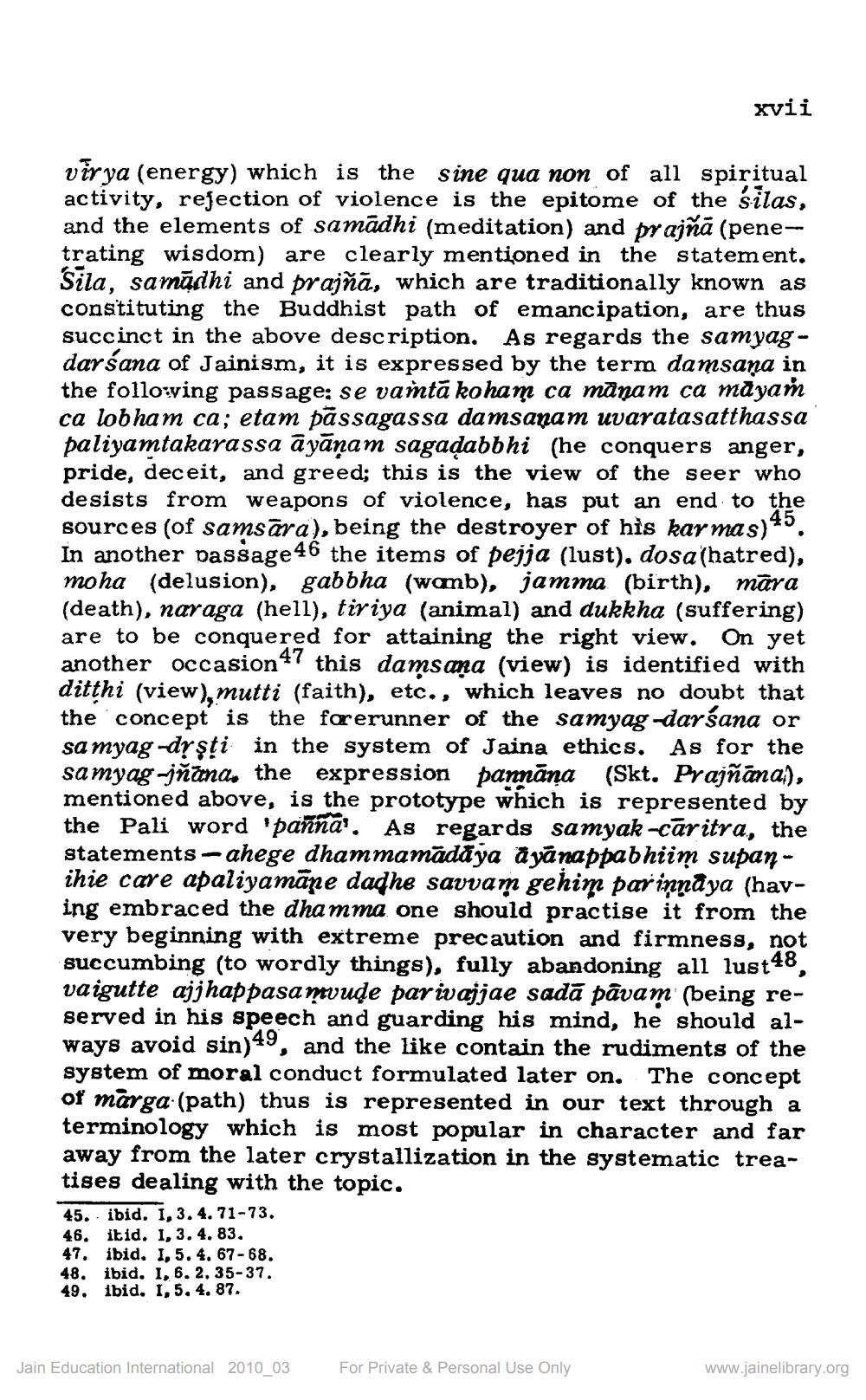________________
virya (energy) which is the sine qua non of all spiritual activity, rejection of violence is the epitome of the silas, and the elements of samadhi (meditation) and prajñā (pene-trating wisdom) are clearly mentioned in the statement. Sila, samadhi and prajñā, which are traditionally known as constituting the Buddhist path of emancipation, are thus succinct in the above description. As regards the samyagdarśana of Jainism, it is expressed by the term damsana in the following passage: se vamtā koham ca māņam ca māyaṁ ca lobham ca; etam pāssagassa damsanam uvaratasatthassa paliyamtakarassa āyāṇam sagaḍabbhi (he conquers anger, pride, deceit, and greed; this is the view of the seer who desists from weapons of violence, has put an end to the sources (of samsara), being the destroyer of his karmas)45. In another passage46 the items of pejja (lust). dosa (hatred), moha (delusion), gabbha (wamb), jamma (birth), māra (death), naraga (hell), tiriya (animal) and dukkha (suffering) are to be conquered for attaining the right view. On yet another occasion47 this damsana (view) is identified with ditṭhi (view),mutti (faith), etc., which leaves no doubt that the concept is the forerunner of the samyag-darśana or samyag-drşți in the system of Jaina ethics. As for the samyag-jñana. the expression pannāna (Skt. Prajñāman, mentioned above, is the prototype which is represented by the Pali word 'pañña'. As regards samyak-caritra, the statements-ahege dhammamādāja āyāṇappabhiim supan - ihie care apaliyamane dadhe savvam gehim parinṇāya (having embraced the dhamma one should practise it from the very beginning with extreme precaution and firmness, not succumbing (to wordly things), fully abandoning all lust48, vaigutte ajjhappasamvude parivajjae sadā pāvam (being reserved in his speech and guarding his mind, he should always avoid sin)49, and the like contain the rudiments of the system of moral conduct formulated later on. The concept of marga (path) thus is represented in our text through a terminology which is most popular in character and far away from the later crystallization in the systematic treatises dealing with the topic.
45. ibid. 1, 3.4.71-73.
ibid. 1, 3.4. 83.
46. 47. ibid. 1, 5. 4. 67-68. 48. ibid. 1, 6. 2. 35-37. 49. ibid. 1, 5.4.87.
Jain Education International 2010_03
xvii
For Private & Personal Use Only
www.jainelibrary.org




